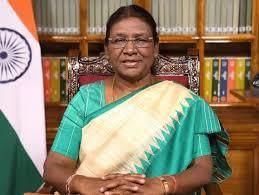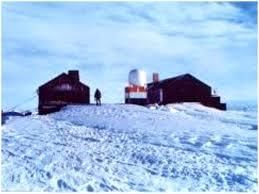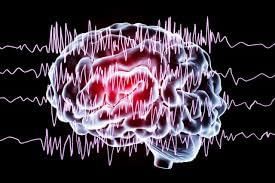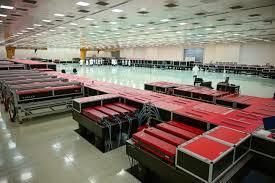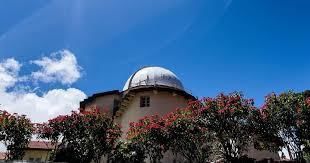Weekly Current Affairs (1st to 7th April 2024) | General Test Preparation for CUET UG - CUET Commerce PDF Download
President’s Greetings on eve of Chaitra Sukladi, Ugadi, Gudi Padwa, Cheti Chand, Navreh and Sajibu Cheiraoba
- President of India, Smt. Droupadi Murmu, has conveyed her greetings to fellow citizens on the eve of Chaitra Sukladi, Ugadi, Gudi Padwa, Cheti Chand, Navreh, and Sajibu Cheiraoba.
- These festivals, celebrated in different parts of the country, mark the beginning of the spring season and the Indian New Year. The President emphasized that these festivals spread the message of peace, harmony, and tolerance, and are symbols of India’s rich culture and heritage.
Chaitra Sukladi
- Chaitra Sukladi is the New Year’s Day according to the Hindu calendar in parts of North India. It falls on the first day of the Chaitra month, which is the first month of the Hindu calendar. The festival is celebrated with religious rituals, family gatherings, and the exchange of gifts and sweets.
Ugadi
- Ugadi is the New Year’s Day for the states of Andhra Pradesh, Telangana, and Karnataka. The festival derives its name from the Sanskrit words “yuga” (age) and “adi” (beginning), signifying the beginning of a new age. Ugadi is celebrated with the preparation of a special dish called “Ugadi Pachadi,” which is a mixture of six different tastes, symbolizing the various experiences of life.
Gudi Padwa
- Gudi Padwa is the traditional New Year’s Day for the people of Maharashtra. The festival is celebrated by hoisting a “Gudi,” a decorated pole with a cloth or silk banner, outside homes and temples.
- The Gudi symbolizes victory and the arrival of spring. People wear new clothes, prepare traditional dishes, and visit temples to seek blessings.
Cheti Chand
- Cheti Chand is the Sindhi New Year festival, celebrated on the first day of the Chaitra month. The festival is particularly significant for the Sindhi community, who worship Lord Jhulelal, the patron saint of Sindhis.
- People gather at temples, offer prayers, and participate in processions carrying the idol of Lord Jhulelal.
Navreh
- Navreh is the Kashmiri New Year festival, celebrated on the first day of the Chaitra month. The festival is associated with the onset of spring and the blossoming of flowers. People decorate their homes with flowers, prepare traditional dishes, and visit temples to offer prayers.
Sajibu Cheiraoba
- Sajibu Cheiraoba is the Manipuri New Year festival, celebrated on the first day of the Sajibu month in the Manipuri calendar. The festival marks the beginning of a new agricultural cycle and is celebrated with the preparation of a special dish called “Chak-Hao,” made from fermented soybean. People also perform traditional dances and offer prayers to the deities for a prosperous year ahead.
What is Pin Code MH-1718?
India set up its first post office in Antarctica’s Dakshin Gangotri in 1984. Within a year, more than 10,000 letters and mail had been posted and ‘cancelled’ at the post office. In 1988-89, Dakshin Gangotri submerged in ice and was subsequently decommissioned. Another branch was set up at Maitri research station in Antarctica on January 26, 1990.
Postal Operations and Philately
- Letters meant for the post office in Antarctica are sent to the National Centre for Polar and Ocean Research (NCPOR) in Goa, the nodal agency for India’s polar expeditions.
- A researcher carries the consignment of letters during scientific expeditions to the continent.
- At the research base, the letters are ‘cancelled’ with the stamp impression “Maitri North Goa,” which has become a renowned “collector’s item” among philatelists and hobbyists.
- The term ‘cancellation’ pertains to the mark placed on a stamp or postal stationery to render it useless for reuse, denoting the location and date of the originating post office.
New Pin Code: MH-1718
- Nearly 40 years later, the Department of Posts is opening a second branch of the post office and assigning a new pin code MH-1718.
- The code currently allocated is “experimental,” as is customary when a new branch commences operations.
Strategic Importance
- The post office serves a strategic purpose in asserting India’s presence on the continent, as Antarctica’s governance falls under the Antarctic Treaty, which neutralizes territorial claims by nations, bans military operations and nuclear tests, and advocates for the continent’s use exclusively for scientific discovery.
Additional Facts
- India has two permanent research bases in Antarctica: Maitri, established in 1989, and Bharati, established in 2012.
- The Antarctic Treaty, signed in 1959 and enacted in 1961, sets aside Antarctica as a scientific preserve and bans military activity on the continent.
- India has been conducting scientific research in Antarctica since 1981 and has been a consultative member of the Antarctic Treaty since 1983.
- The Indian Antarctic Program is managed by the National Centre for Polar and Ocean Research (NCPOR), an autonomous institute under the Ministry of Earth Sciences, Government of India.
100th Anniversary of Discovery of Electroencephalogram (EEG) Observed
The year 2024 marks the centennial of the discovery of the electroencephalogram (EEG) by German psychiatrist Hans Berger. The EEG, a medical test that measures the electrical activity of the brain, has become a crucial tool for understanding the brain and diagnosing neurological disorders.
History and discovery
- In 1924, working in near-isolation and with painstaking tediousness, Hans Berger observed rhythmic electrical activity from the scalp of human subjects in Jena, Germany. Convinced that the activity arose from within the brain, he coined the term “electroencephalogram.” It took another decade for the scientific community to accept Berger’s work, marking the birth of the field of electroencephalography.
Clinical applications
- Today, the EEG is widely used as a medical test to measure brain electrical activity in patients with or suspected to have neurological disorders. The procedure can be short, often just a 30-minute recording, but for patients monitored for diagnosis or treatment of brain disease, it can be continued for days or even weeks. Neurologists use EEG on a daily basis to interpret brain activity and diagnose conditions such as epilepsy.
Understanding the EEG
- The EEG arises from the excitable nature of nerve cells, or neurons. When neurons fire, action potentials set up local electrical activity in other neurons, causing current to flow within and outside them. The average overall activity is a mix of many different frequencies, with the five main ones called delta, theta, alpha, beta, and gamma waves. The remarkable fact is that EEG tends to spontaneously organize into patterns in time and space, which can be recognized and correlated to specific disease states.
Research on pattern formation in EEG
- Beyond clinical applications, scientists are interested in understanding how electrical patterns arise in the brain. Research has shown that activity in the brain is naturally repetitive, or oscillatory, due to the way neurons are connected and interact by excitation and inhibition to produce push-pull effects. By considering local oscillations as fundamental building blocks, researchers have demonstrated that the EEG over the entire brain could be built up from such elementary blocks, and differing frequencies could be made to coalesce, or synchronize, into a common rhythm.
EEG, AI, and the mind
- The hardware underlying the majority of today’s artificial intelligence (AI) systems, neural networks, were introduced in 1943 by Warren McCulloch, a physician and electroencephalographer. McCulloch wondered where in the brain’s neurons and EEG lay the capacity to think, and conceived the idea of grouping artificial neuron-like computing units into networks, analogous to how real neurons in the brain interconnected. Recent deep-learning AI research has shown that some aspects of mental activity may be decoded from EEG, raising questions about the possibility of AI approaching Berger’s quest for telepathy.
Additional facts
- The first clinical EEG laboratory was set up at Massachusetts General Hospital in 1937.
- In December 1934, a group of Boston physicians observed the rhythmic EEG spike-wave appearance of seizures in patients with “petit mal” epilepsy, correlating symptoms and behavior during seizures with a brain signal for the first time.
- EEG has been used to study sleep stages, with distinct patterns observed during different stages of sleep, such as rapid eye movement (REM) sleep and non-REM sleep.
- EEG has also been employed in brain-computer interfaces (BCIs), which allow individuals to control external devices using brain signals.
- In addition to its clinical applications, EEG has been used in research to study cognitive processes, such as attention, memory, and decision-making.
- The discovery of EEG has paved the way for other brain imaging techniques, such as magnetoencephalography (MEG), functional magnetic resonance imaging (fMRI), and positron emission tomography (PET).
Issue of State Governments Power to Levy Excise Duty on Industrial Alcohol
The Supreme Court is currently hearing arguments on whether state governments have the power to regulate and control the sale, distribution, pricing and other factors relating to ‘industrial’ alcohol. The case has been referred to a 9-judge Bench headed by Chief Justice of India D Y Chandrachud.
Background
- The case originated from a notification issued by the Uttar Pradesh government in 1999, introducing a 15% fee for any sale made to licence holders under the UP Excise Act, 1910 for “alcohol used directly or…as solvent for vehicles and appear[ing] in the final product to some extent”.
- This was challenged by a motor oil and diesel distributor who claimed that the Centre exercised exclusive jurisdiction over industrial alcohol as per Section 18-G of the Industries (Development and Regulation) Act, 1951 (IDRA).
Constitutional provisions
- The case revolves around the interpretation of the following entries in the Seventh Schedule of the Constitution of India:
- Entry 8 in the State List: This entry gives states the power to legislate on the production, manufacture, possession, transport, purchase and sale of “intoxicating liquors”.
- Entry 52 of the Union List and Entry 33 of the Concurrent List: These entries mention industries, whose control is “declared by Parliament by law to be expedient in public interest”. Notably, subjects in the Concurrent List can be legislated upon by both states and the Centre, but where a central law exists, the state law cannot be repugnant to it.
- Industrial alcohol is listed in the Industries (Development and Regulation) Act, 1951 (IDRA).
Previous Supreme Court judgments
- In 1989, a 7-judge Constitution Bench in ”Synthetics & Chemicals Ltd v. State of Uttar Pradesh” held that states’ powers, as per Entry 8 of the State List, were limited to regulating “intoxicating liquors” which are different from industrial alcohol. However, the court did not consider its prior Constitution Bench decision in ”Ch Tika Ramji v State of UP” (1956) where five judges upheld a legislation enacted in UP to regulate the supply and purchase of sugarcane, despite Section 18-G of the IDRA giving the Centre exclusive jurisdiction over regulation of the sugar industry.
Arguments before the court
- Senior Advocate Dinesh Dwivedi, appearing for the State of UP, argued that the phrase “intoxicating liquors” in Entry 8 of the State List includes “all liquids containing alcohol”. He also submitted that without an order under Section 18-G of the IDRA, the control over regulation of industrial alcohol would vest with the states.
India’s Market Cap Likely to Hit $10 Trillion by 2030
India’s stock market capitalization is currently the fifth largest globally at $4.5 trillion, according to a report titled ‘Recap 2024. Crystal Gaze 2025’ by financial conglomerate Pantomath Group. The report predicts that India’s market cap is likely to hit $10 trillion by 2030, driven by strong economic growth and favorable government policies. This would make India the third-largest economy in the world by 2027.
Current Global Market Cap Rankings
As of 2024, the top five countries by market capitalization are:
- United States: $44.7 trillion
- China: $9.8 trillion
- Japan: $6 trillion
- Hong Kong: $4.8 trillion
- India: $4.5 trillion
India’s Equity Market Performance in FY2024
In the fiscal year 2023-24, the Indian equity market witnessed a phenomenal performance, with benchmark indices soaring to unprecedented all-time highs:
- Nifty: Scaled a milestone of 22,526.60
- Sensex: Reached a peak of 74,245.17
- NSE Midcap 100: Advanced around 60.06%
- NSE Smallcap 250: Advanced around 63.07%
India emerged as one of the best-performing markets in the last four years, ending a time-wise correction in March 2023 and continuing its strong momentum.
Factors Driving Market Growth
Several factors are expected to contribute to India’s market cap growth:
- Strong corporate earnings: Indian companies are expected to continue strong performance, driven by a robust domestic demand environment, positive macroeconomic factors, and private capex revival.
- Sector-specific growth: Sectors like Auto and Auto Ancillary, Cements, Defence, Railways, Consumer Durables, Energy, Logistics, FMCG, Capital Goods and Engineering, Infrastructure, Construction, Banking, and Financials are expected to outperform in the rally ahead.
Impact of Lok Sabha Elections and RBI Interest Rate Cut
The report suggests that the focus in FY2025 will be on the Lok Sabha elections, with the expectation that the ruling government will retain power and continue its economic reforms and policies. This outcome would instill confidence in both domestic and global investors, encouraging long-term investments in the Indian equity markets.
Emerging Industries Poised for Investment-Led Growth
The report identifies several emerging industries that are poised for investment-led growth in 2024:
- Battery energy storage solutions
- Green hydrogen
- Biotechnology
- AVGC (animation, visual effects, gaming, comics)
- Semiconductor chip manufacturing, assembly, and design
These industries have been on a hot streak in 2024, as foreign direct investment (FDI) policies have relaxed in recent years, and production-linked incentive (PLI) schemes have promoted industry-wise capacity building.
World’s Most Powerful Laser Developed in Romania
A research centre in Romania, part of the European Unions Infrastructure Extreme Light Infrastructure (ELI) project, has developed the worlds most powerful laser. The laser, operated by French company Thales Group, utilizes Nobel Prize-winning inventions and promises revolutionary advancements in various fields, including healthcare and space exploration. The laser is housed at a research centre near the Romanian capital, Bucharest.
Nobel Prize-Winning Technology
- The laser technology, known as chirped pulse amplification (CPA) technique, used in the Romanian facility is based on the inventions of Gérard Mourou from France and Donna Strickland from Canada. They were awarded the Nobel Prize in Physics in 2018 for their groundbreaking work in harnessing the power of lasers for advanced precision instruments.
- The Nobel Committee for Physics citation stated, “The sharp beams of laser light have given us new opportunities for deepening our knowledge about the world and shaping it.”
Potential Applications
The ultra-powerful laser developed in Romania has the potential to revolutionize various fields and solve critical problems. Some of the possible applications include:
- Nuclear Waste Treatment: The laser could be used to reduce the radioactivity duration of nuclear waste, making its disposal safer and more manageable.
- Space Debris Removal: With the increasing amount of debris accumulating in space, the laser technology could be employed to clean up the orbital environment, mitigating the risk of collisions with satellites and spacecraft.
- Medical Advancements: The precise and powerful nature of the laser could lead to breakthroughs in medical treatments, such as targeted cancer therapies and advanced surgical techniques.
ELI Project and Thales Group
The laser facility in Romania is part of the European Unions Infrastructure Extreme Light Infrastructure (ELI) project, which aims to push the boundaries of laser technology and its applications. French company Thales, a global leader in aerospace, defence, and security solutions, operates the laser at the Romanian research centre.
125 Years of Kodaikanal Solar Observatory
The Kodaikanal Solar Observatory (KoSO) is a solar observatory located in Kodaikanal, Tamil Nadu. Established in 1899, it is one of the oldest solar observatories in the world and has been at the forefront of solar research for over 125 years. The observatory, which celebrates its 125 years of existence, is currently operated by the Indian Institute of Astrophysics (IIA), Bengaluru.
History
- The need for a solar observatory in India was first recognized in the late 19th century, following the Great Drought of 1876-1878. The Madras Observatory, established by the British East India Company in 1792, had been recording astronomical observations, but a dedicated solar observatory was deemed necessary to study the relationship between solar activity and India’s monsoon patterns.
- In 1893, the British Government sanctioned the establishment of a Solar Physics Observatory under the meteorological budget. The site selection process, led by Charles Michie Smith, a professor at Madras Christian College, eventually chose Kodaikanal as the ideal location due to its favorable weather conditions and clear skies.
- The observatory’s foundation stone was laid in 1895 by Lord Wenlock, the then Governor of Madras. Regular observations began on March 14, 1901, with Charles Michie Smith serving as the first director of KoSO.
Instruments and Observations
Over the years, KoSO has housed several important instruments, including:
- Bhavnagar Telescope: A 16-inch Newtonian/Cassegrain telescope, which was the largest in India from 1888 to 1968.
- Spectroheliograph: Used for studying the Suns chromosphere and prominences.
- H-alpha Telescope: For full-disc imaging of the Sun.
- White Light Active Region Monitor (WARM): Enables simultaneous observations of the photosphere and chromosphere.
The observatory has made significant contributions to solar physics, including:
- The discovery of the Evershed effect by John Evershed, who served as the director of KoSO from 1911 to 1922.
- Regular sunspot observations and measurements of solar radiation.
- Spectroscopic studies of the solar chromosphere and prominences.
Digital Archive
- KoSO maintains a vast archive of solar data, with observations spanning over a century. In recent years, the observatory has undertaken a digitization project to preserve and make accessible its valuable collection of solar images.
- The digital archive contains over 1.48 lakh digitized solar images, amounting to 10 terabytes of data.
- The collection includes 33,500 white-light images of sunspots and thousands of other solar images recorded daily since the early 20th century.
- KoSOs digital archive is one of the most comprehensive and longest-running solar data collections in the world, with a coverage of more than 75% of the period.
Current Status and Research
Today, KoSO continues to be a premier institution for solar research in India. The observatory is equipped with state-of-the-art instruments and is actively involved in various national and international collaborations.
Some of the current research areas at KoSO include:
- Solar activity and its impact on space weather
- Study of solar flares and coronal mass ejections
- Investigation of the solar magnetic field and its evolution
- Solar-terrestrial relationships and their influence on Earths climate
- The observatory also plays a crucial role in training and education, hosting workshops, and providing research opportunities for students and scientists from India and abroad.
|
194 videos|842 docs|2232 tests
|


